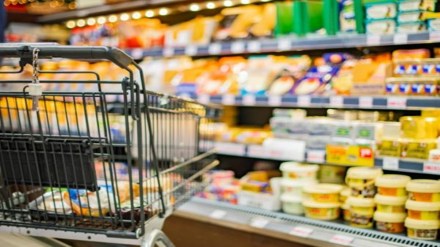The National Statistical Office’s (NSO) first advance estimates has projected private final consumption expenditure (PFCE) to grow by 7.3% in FY25, but economists feel the number is “too optimistic”, given urban demand remains subdued.
“The main indicators of the consumption so far indicate that the (skewed nature of) the consumption growth is correcting somewhat with the pick-up in rural real wages. However, the slack in urban demand is persisting as indicated by commentaries from some FMCG companies and also the decline in imports to the tune of 1.3% in FY25,” noted India Ratings and Research (Ind-Ra) in a report.
“The PFCE estimate seems to be on the higher side. Wage growth has been lower this year mainly on the urban side, savings have depleted, & high food inflation stays a challenge,” noted Dhiraj Nim, economist, ANZ Research. Nim sees PFCE growing between 6.5-6.8% in the current financial year.
In H1, PFCE had grown 6.7%, meaning in H2 the sector’s growth is likely to be 7.8%. In FY24, the PFCE had grown merely 4%, largely due to tepid rural consumption.
This year, the above normal monsoon is seen aiding rural consumption recovery. The NSO has estimated the agriculture sector’s GVA to grow 4.5% in H2, up from 2.7% in H1, and 1.4% in FY24. According to DK Joshi, chief economist, Crisil: “rural consumption, which constitutes about 60% of India’s total private consumption, will receive a boost from healthy kharif production and promising prospects for the rabi season.”
Emkay Global’s Madhavi Arora said that private consumption is seen remaining tepid, as real urban wages continue to decline, with other cyclical headwinds in the form of: (a) fading terms-of-trade benefits on lower commodity prices; (b) tighter lending standards; and (c) weaker exports.
Looking at the first advance estimate figures (6.4% for FY25), analysts say the Indian economy remains resilient on the back of the strong festive demand and steady improvement in economic activity, but some downside risks to the projections remain.
Some downside risk to these estimations emerge due to global headwinds, especially the threat of tariff war, said Jahnavi Prabhakar, economist, Bank of Baroda. “Investment and consumption continue to remain critical factors supporting growth in the coming months,” she said.
Looking ahead, the focus would move towards the Union Budget, corporate performance in Q3 and Q4 and RBI’s rate decision to spur growth. BoB expects the rate cut cycle to begin in February. For FY26, economists expect the nominal GDP growth at 10.5% and real GDP at 6.8%.
